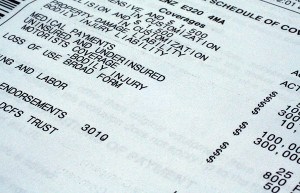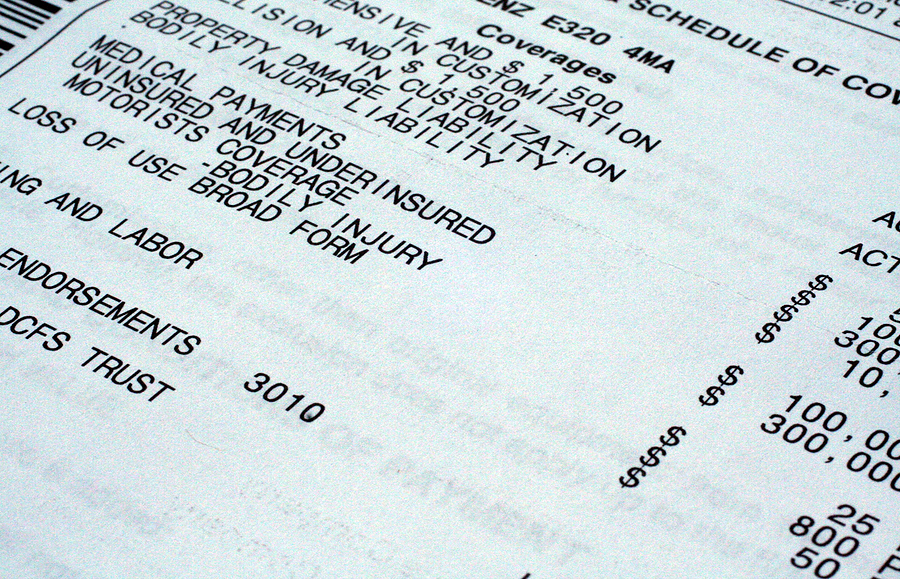 Most automobile and premises liability policies provide medical payments coverage. The amount of available coverage is typically small and therefore questions that arise regarding the application and function of medical payments coverage are scarce. Because of the small dollar values involved, coverage issues are oftentimes not litigated and therefore there is a small body of case law to refer to in evaluating a medical payments coverage question.
Most automobile and premises liability policies provide medical payments coverage. The amount of available coverage is typically small and therefore questions that arise regarding the application and function of medical payments coverage are scarce. Because of the small dollar values involved, coverage issues are oftentimes not litigated and therefore there is a small body of case law to refer to in evaluating a medical payments coverage question.
In terms of the basics, medical payments insurance is not dependent upon fault. The medical payments coverage is offered with relatively low policy limits for a relatively low premium and serves as an additional source of funds for medical expenses for injured persons. Progressive West Ins. Co. v. Yolo County Superior Court, 135 Cal.App.4th 263, 37 Cal.Rptr.3d 434 (3rd Dist. 2005).
One court has described medical payments coverage as third-party beneficiary health insurance. Hein v. American Family Mut. Ins. Co., 166 N.W.2d 363 (Iowa 1969).
Courts are split almost equally on whether an injured party, not the insured, can bring a direct action against the insurance company for medical payments benefits as a third-party beneficiary of the insurance contract.
The courts that allow for direct action by a third-party reason that the no-fault medical payments coverage is “divisible from the remainder of the policy, and creates a direct liability to the contemplated beneficiaries.” See, e.g., Donald v. Liberty Mut. Ins. Co., 18 F.3d 474 (7th Cir. 1994).
Other courts have found that medical payments coverage is primarily for the benefit of the contracting parties. Zegar v. Sears Roebuck & Co., 570 N.E.2d 1176, 1179 (Ill. Ct. App. 1st Dist. 1991). The latter courts permit the insured to pay the medical expenses of the injured victim without the insured waiving a claim for indemnity against the insurer by voluntarily assuming payment of the injured party’s medical expenses. Additionally, these courts reason that the payment of medical payments benefits assists settlement because the insurance company can “pay easily ascertainable medical reimbursement without a formal determination of fault.”
A heavily litigated issue involves the obligation to reimburse medical payments on an “incurred” basis. This issue arises given the timing element of the insuring clause which requires the medical treatment to occur within the policy’s specified time period. Typically the policy requires that “reasonable expenses” be “incurred” within one or three years of a qualifying “accident.” Issues arise when it is not possible for the injured insured to receive the necessary and expected medical treatment within the allotted policy time period.
The majority of courts that have considered this issue focus upon whether or not the medical expenses were contracted for and/or paid for within the time limitation (Hein).
In cases where the injured person needs a series of medical procedures or operations, which must be performed in sequence, the courts have developed two approaches in determining whether the expenses have been “incurred” within the time limitation.
The majority view asks whether the medical expenses were contracted for and/or paid for within the time limitation. See, Hein and Georgia Farm Bureau Mut. Ins. Co. v. Calhoun, 127 Ga.App. 213, 193 S.E.2d 35 (1972).
Other courts have adopted a more liberal approach.
As an example, the Louisiana courts determine whether expenses have been incurred by asking the following questions: (1) did the injury manifest itself within one year of the accident; (2) was the insurer aware of the nature of the injury; (3) did the insured approach a physician and obtain a diagnosis and recommended course of treatment prior to the expiration of one year from the date of the accident; and (4) whether the treatment could not successfully be completed within a one year period. See, e.g., Fishman v. Howard, 447 So.2d 513 (La. Ct. App. 4th Cir. 1984).
By focusing upon the course of action initiated by the insured in completing treatment before expiration of the time limitation, these courts utilize a less rigid approach than the majority rule.
The second highly litigated issue in the medical payments context is whether “necessary” medical expenses have been “incurred.”
Most courts leave the question of whether a medical service is “necessary” to the jury to be decided on a case-by-case basis. See, e.g., Salerno v. Atlantic Mut. Ins. Co., 198 Ariz. 54, 6 P.3d 758 (Ct. App. 2000).
Two rules have been identified by the court to guide the determination of whether a medical service is “necessary.”
The first rule considers whether the insured can demonstrate that the treatment regime has facilitated pain management or that as a result of the treatment, the frequency of medical intervention decreased. Under this rule, “necessary” medical services include those reasonably calculated to shorten and relieve an ordeal of agonizing pain and therefore effectuate the most rapid recovery possible. See, e.g., Group Hospitalization, Inc. v. Levin, 305 A.2d 248 (D. C. 1973).
The second rule defers the question of necessity to the treating physicians orders. See, e.g., Thermographic Diagnostics, Inc. v. Allstate Ins. Co., 219 N.J.Super. 208, 530 A.2d 56 (Law Div. 1987).
Under the standard medical payments coverage clause, insurance companies are only required to pay reasonable medical expenses. Courts generally leave the issue of reasonableness to a jury. See, e.g., State Farm Mut. Auto. Ins. Co. v. Sestile, 821 So.2d 1244 (Fla. Dist. Ct. App. 2nd Dist. 2002).
Typically, the burden rests upon the insured to demonstrate that the medical expenses are reasonable. Id. If the claimant is unable to show that a particular expense has been incurred for a reasonably necessary service, then there can be no finding of liability with regard to that expense. Advocacy Organization for Patients & Providers v. Auto Club Ins. Ass’n, 257 Mich.App. 365, 670 N.W.2d 569 (2003), aff’d 472 Mich. 91, 693 N.W.2d 358 (2005).
An interesting question arises with regard to coinsurance through health insurance. The possibility of a double recovery can occur when the insured asserts a claim for medical payments coverage while simultaneously receiving benefits from health insurance.
Only a few courts have considered the non-duplication question.
In Kopp v. Home Mut. Ins. Co., 6 Wis.2d 53, 94 N.W.2d 224 (1959), the insurance company argued that because the medical bills in question had been paid by Blue Cross to the hospital, the insured did not “incur” the expense for purposes of medical payments coverage. The Court rejected this argument, however. The Court found that the insured had “incurred” expenses because the policy did not state who was required to incur the expense thereby creating an ambiguity in the policy.
Was this article valuable?
Here are more articles you may enjoy.


 Synopsys Sued by Private Equity Firm for Shopping $3 Billion Unit
Synopsys Sued by Private Equity Firm for Shopping $3 Billion Unit  Texas Among Several States Facing New Fire Risks: Weather Watch
Texas Among Several States Facing New Fire Risks: Weather Watch  Justice Department Preparing Ticketmaster Antitrust Lawsuit
Justice Department Preparing Ticketmaster Antitrust Lawsuit  Property Restoration Industry: A Culture in Need of Repair?
Property Restoration Industry: A Culture in Need of Repair? 